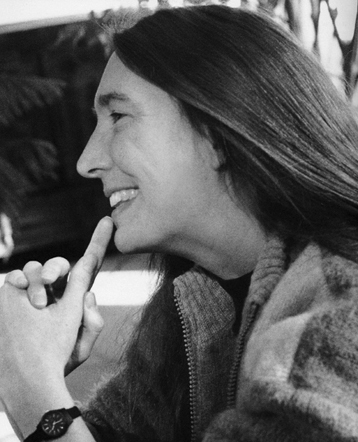JENNY HOLZER (b. 1950)
 Jenny Holzer belongs to the feminist branch of a generation of artists that emerged around 1980, looking for new ways to make narrative or commentary an implicit part of visual objects. Her contemporaries include Barbara Kruger, Cindy Sherman, Sarah Charlesworth, and Louise Lawler.
Jenny Holzer belongs to the feminist branch of a generation of artists that emerged around 1980, looking for new ways to make narrative or commentary an implicit part of visual objects. Her contemporaries include Barbara Kruger, Cindy Sherman, Sarah Charlesworth, and Louise Lawler.
Holzer is mostly known for her large-scale public displays that include billboard advertisements, projections on buildings and other architectural structures, as well as illuminated electronic displays. The main focus of her work is the use of words and ideas in public space. Originally utilizing street posters, LED signs became her most visible medium, though her diverse practice incorporates a wide array of media including bronze plaques, painted signs, stone benches and footstools, stickers, T-shirts, condoms, paintings, photographs, sound, video, light projection, the Internet, and a Le Mans race car.
In 1981, Holzer initiated the Living series, which she printed on aluminum and bronze plaques, the presentation format used by medical and government buildings. In 1982, the artist installed for the first time a large electronic sign on the Spectacolor board at Times Square, New York.
Sponsored by the Public Art Fund program, the use of L.E.D. (light emitting diode) allowed Holzer to reach a larger audience. The texts in her subsequent Survival series, compiled in 1983-85, speak to the great pain, delight, and ridiculousness of living in contemporary society. Holzer began working with stone in 1986. In her 1986 exhibition at Barbara Gladstone Gallery in New York, she introduced a total environment, where viewers were confronted with the relentless visual buzz of a horizontal LED sign and stone benches leading up to an electronic altar. This practice culminated in the installation at the Guggenheim Museum in 1989 of a 163 meter-long sign, forming a continuous circle spiraling up the parapet wall. Holzer wrote texts herself for a long time between 1977 and 2001. However since 1993, she has been mainly working with texts written by others. She also uses texts from different contexts, such as passages from de-classified US Army documents from the war in Iraq. Holzer’s works often speak of violence, oppression, sexuality, feminism, power, war and death. Her main concern is to enlighten, bringing to light something thought in silence and meant to remain hidden.
